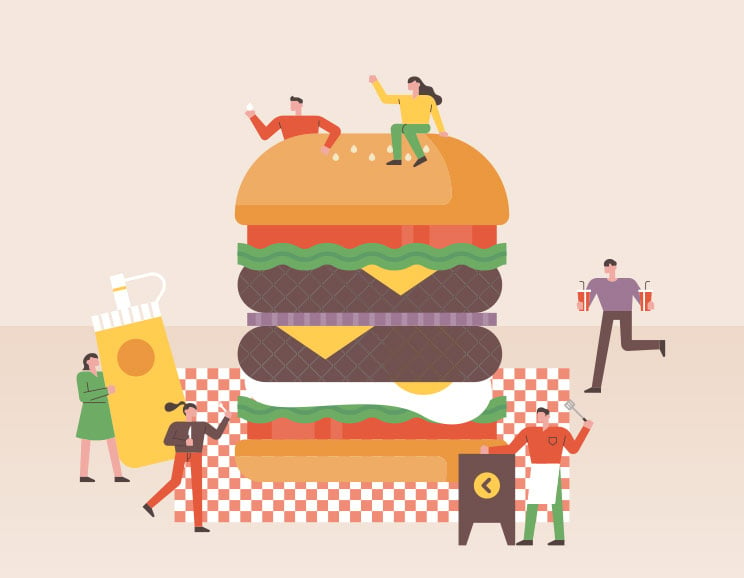When the guardian force of your immune system turns its destructive power towards the tissues of your body, it is said you have an autoimmune condition. These conditions of self attacking self are on the rise. Your immune system can lash out against your thyroid, your DNA, your nerves, your connective tissues, your glands—virtually any tissue in the body (1).
Conventional thinking states that the cause of autoimmune disease is unknown. Although a genetic component is often acknowledged, certainly this does not cover the majority of cases. As is often the case in health, conventional wisdom and treatment approaches are entrenched several decades behind the cutting edge and current research (2).
If the development of autoimmune disease were a novel, there would be many characters and plot twists throughout. It simply is not absent one day and present the next. Many steps have to happen to de-rail the immune system and get it turned against you—YOU, the very thing your immune system is supposed to protect.
Do you struggle with bloating, gas, constipation, or other digestive issues? We’ve created a FREE guide to healing your gut naturally.
Click here to get your FREE copy of our Eat Wild Guide!
How the Immune System Learns to Protect You
To understand how a system whose primary job is to protect you can hurt you, let’s start with the story about how your immune system learns its job.
The focus of the immune system is simple: Find and kill anything that is not “self”—that is not your own cells. It is singular and relentless in this focus. It does a good job at this.
There is a conundrum, however. Can you see it? The foods that you eat and the beneficial bacteria that inhabit your gastrointestinal tract are not “self.” They are not you, even though you need them for survival. This is the job the immune system is tasked with: learn to tolerate things that are not self yet nourish and give benefit to you, while at the same time seek and destroy bad guys that would harm you.
How does your immune system learn such a discerning, complicated thing?
When you are a tiny baby, your immune system gets early, rigorous training. The cells of your immune system begin to learn the difference between your cells, your food, your beneficial bacteria, and everything else.
This all takes place in the thymus gland. The thymus gland is an innocuous bit of tissue behind the breastbone that begins to shrink as you approach puberty, because it has finished educating your immune system. It is the location where newly budding immune cell lines learn to “tolerate” and not destroy your own cells, the foods you eat and the friendly bacteria that are colonizing your body (3). This process is aptly named tolerization (4).
Immune cells which show any killing activity against your own cells, food or beneficial bacteria are eliminated and taken out of circulation. They cannot divide and live on. Only immune cells that show tolerization can avoid destruction and go on to replicate themselves. Your current immune system has descended from these very same lines that were shaped when you were a baby.
Tolerization is a very important plot piece in our novel of autoimmunity, because autoimmunity can develop when tolerization is lost. Your immune cells lose sight of their lessons. They have forgotten what their ancestors have taught them, and your immune system destroys your tissues (5, 6, 7).
Your Gut and Your Immune System
The plot thickens: roughly two-thirds of your immune system is located in the gastrointestinal system. Specifically, you’ll find it based in specialized tissue called GALT and MALT (gut- and mucosa- associated lymphoid tissue, respectively), which is embedded around your intestines (8, 9).
Your small intestine is the next major character in this tale of autoimmunity. Not only is the small intestine the major avenue through which you absorb nutrition, it also acts as the interface between your immune system and everything that you eat and swallow or otherwise gets in your belly.
The integrity of the lining of your small intestine is of utmost importance because it acts like a gatekeeper for the immune system.
The lining of your small intestine is one cell layer thick. The cells stand closely together, touching, like a row of soldiers. They sit so closely together that there is a structure called a desmosome that buttons them together.
This buttoning-up equates to good integrity of the lining and a balanced immune system. It helps the small intestine act like a smart filter, letting the good stuff in, keeping the bad stuff out. If bad stuff slips by this smart filter, your immune system is right there, ready to pounce. Not only does your lining act like a filter, it acts like a chaperone too, helping your immune system stay calm and well-behaved.
Good Guts Gone Wrong—Where Autoimmunity Starts
One of the first steps to the development of autoimmunity is an ongoing problem with the integrity of the lining of the small intestine—a dysfunctional unbuttoning of the cells that breaches the filter and tricks the chaperone (10, 11, 12).
It is normal to have temporary changes of the lining, such as when you get sick or work out hard (13, 14). In these cases, your lining unbuttons and becomes more permeable to promote better immune response and healing. It’s normal and healthy. This increased permeability is carefully controlled by your body and resolves on its own.
Where you run into trouble is when this unbuttoning goes chronic, leading to long-term permeability that doesn’t belong. The interface between your immune system, your cells, your food and your beneficial bacteria has been compromised.
From here, it doesn’t go very well. With a lining that has been too permeable for too long, the immune system becomes provoked because it is being repeatedly exposed to food particles, bacteria and other compounds without the benefit of the smart filter and the chaperoning of the lining of your small intestine. It releases inflammatory compounds and antibodies as it runs into particles it doesn’t think should be there (15, 16, 17).
An Uncontrolled Fire
This does two things—it keeps your lining loose and permeable (many folks use the term “leaky”) and it calls more immune cells to the area, which release even more inflammatory compounds and antibodies. This creates a cycle; it’s an unchecked fire, feeding on itself.
Over time, this cycle of immune activity, inflammation and increased leakiness will make your immune cells forget that they are not supposed to be reacting to food, to friendly bacteria, and to our own cells. They forget, and then they react (18, 19, 20). Tolerization has been lost. In the heat of a battle that has been raging for too long, your immune system forgets its lessons of tolerance. It begins to make antibodies against you. It begins to go to war against you.
Accumulating food sensitivities (“I used to be able to eat that, now I can’t!”), increased environmental allergies, water retention, brain fog, bowel changes, and odd pains through the joints and muscles can be harbingers of autoimmunity (21). Lab studies will show markers in the blood of action against your tissues. The lining of the small intestine is irritated and leaky, the immune system is over-provoked, and the body is unable to bring it all back to balance.
How to Put Out the Fire
To begin to back out of this, you must return to the scene of the crime: the lining of the small intestine.
It is the unchecked irritation of the lining that creates a dysfunctional immune response and a breached integrity and that continues to feed the breach and the immune response both. This is a very important plot point!
There are a number of things that initiate and maintain this unchecked fire, all of which should be addressed in those with any autoimmune condition. Finding and eliminating food sensitivity is central to this. Many folks may need to make dietary changes to get autoimmune flares and symptoms under better control. In the case of an already irritated gut and autoimmune disease, there are some foods that should be greatly minimized. The most concrete example, beautifully researched by Dr. Alessio Fasano, is gluten (22, 23, 24, 25, 26).
In addition to looking solely at the foods you eat, consider that you must break your food down well with enzymes, acids and bile. Big, unbroken food molecules will certainly catch the attention of the immune system and feed the fire. If your beneficial bacteria are not healthy, in low number, or harboring bad guys, this will feed the fire (27, 28, 29, 30).
Chronic stress, binge drinking, regular use of NSAIDs (non-steroidal anti-inflammatory drugs), under-sleeping, and over-exercising without adequate recovery can all promote increased leakiness of the small intestine and continue to feed the fire (31, 32, 33).
In order to put out the fire, take an approach that encompasses these factors: finding and eliminating food sensitivities (34), reducing provocative foods (35), ensuring adequate breakdown of the foods you eat (36), promoting healthy gut flora and addressing infection if present (37, 38, 39), maintaining good integrity of the lining of the small intestine, and managing stress (40).
These approaches can be utilized whether you are taking immunosuppressive drugs or not, and strike at the roots of autoimmunity. When you understand the story of how something comes to be, you are given the map of what you can do about it.
(Read This Next: Autoimmune Diseases and Diet)








 The Natural Benefits Of Grass-Fed Butter
The Natural Benefits Of Grass-Fed Butter









Show Comments